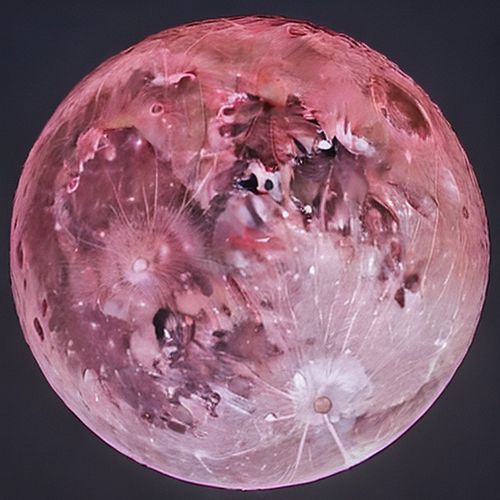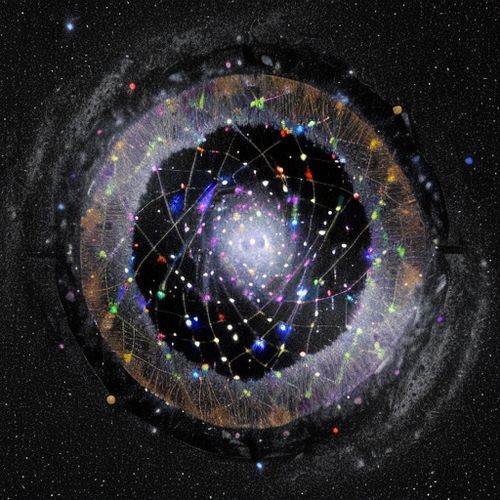As we marvel at the wonders of our universe, the night sky often offers breathtaking displays that captivate stargazers and casual observers alike. One such event is the Pink Moon, which graces the skies in April each year. This year, the Pink Moon will rise on April 12, 2025, at 8:22 p.m. Eastern Daylight Time (EDT), offering a unique celestial experience.
What Makes the Pink Moon Special?
Despite its name, the Pink Moon will not actually appear pink. The name is derived from the arrival of springtime blooms, particularly the hot pink wildflower Phlox subulata, which carpets the slopes of the eastern and central United States around this time. Instead, the moon will retain its usual white-golden hue, illuminated by the sun's reflected light.
However, this year's Pink Moon is particularly notable because it is also a micromoon. A micromoon occurs when the full moon is at or near its greatest orbital distance from Earth, known as apogee. This results in the moon appearing smaller and dimmer than usual. In fact, April's full moon will be the smallest micromoon of the year, making it a unique astronomical event.
The Science Behind Micromoons
The moon orbits Earth in an elliptical path, meaning its distance from Earth varies throughout its orbit. When the full moon occurs near apogee, it is classified as a micromoon. Conversely, a supermoon occurs when the full moon is near perigee, the closest point in its orbit to Earth, making it appear larger and brighter.
This year's Pink Moon will be approximately 252,280 miles (406,100 kilometers) from Earth, making it appear about 14% smaller than a supermoon and about 6% smaller than an average full moon. While this difference is subtle and may not be noticeable to the naked eye, it can be observed through photographs.
Best Viewing Conditions
For the best view of the Pink Moon, NASA recommends finding a location with minimal light pollution and using binoculars or a telescope. The moon will rise in the east around sunset and will be high in the sky by midnight. Observers in Central and South America, as well as parts of southern Africa, will have the added treat of witnessing the moon briefly covering the bright star Spica in an event called an occultation.
Cultural and Religious Significance
The Pink Moon holds significance beyond its astronomical appeal. In Christianity, the first full moon on or after the spring equinox, known as the Paschal Moon, determines the date of Easter. This year, Easter will be celebrated on April 20. Various Native American tribes also have names for this moon, such as the Tlingit's "budding moon of plants and shrubs," the Cherokee's "flower moon," and the Apache's "moon of the big leaves".
Future Lunar Events
Following the Pink Moon, there are several more full moons to look forward to in 2025, including supermoons in October, November, and December. Additionally, skywatchers can enjoy meteor showers throughout the year, with peak dates including the Lyrids on April 21–22, the Eta Aquariids on May 5–6, and the Perseids on August 12–13.
The Pink Moon and micromoon of April 2025 offer a unique opportunity to appreciate the subtle variations in our celestial neighbor. Whether you are an avid stargazer or simply someone who enjoys the beauty of the night sky, this event is a reminder of the dynamic and ever-changing nature of our universe. So, mark your calendars for April 12 and prepare to witness this fascinating astronomical phenomenon.

By Olivia Reed/Apr 14, 2025

By Sophia Lewis/Apr 14, 2025

By Noah Bell/Apr 14, 2025

By Eric Ward/Apr 14, 2025

By Sophia Lewis/Apr 14, 2025

By Sarah Davis/Apr 14, 2025

By William Miller/Apr 14, 2025

By James Moore/Apr 14, 2025

By Eric Ward/Apr 14, 2025

By Grace Cox/Apr 14, 2025

By Rebecca Stewart/Apr 10, 2025

By Grace Cox/Apr 10, 2025

By Thomas Roberts/Apr 10, 2025

By James Moore/Apr 10, 2025

By Laura Wilson/Apr 10, 2025

By John Smith/Apr 10, 2025

By James Moore/Apr 10, 2025

By Olivia Reed/Apr 10, 2025

By Eric Ward/Apr 10, 2025